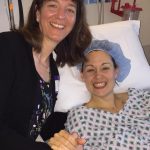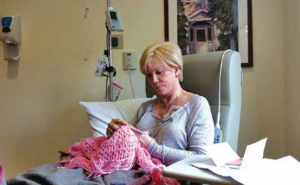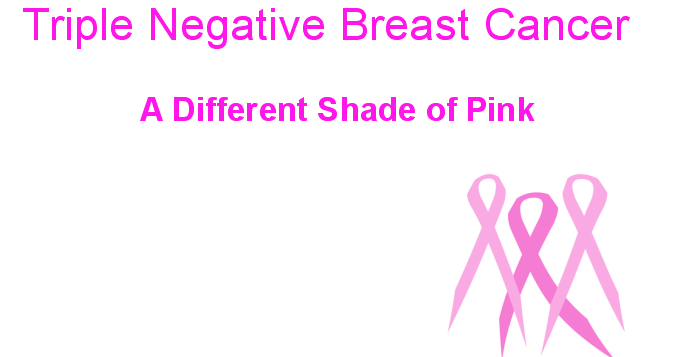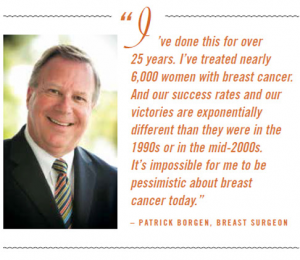When it comes to certain types of cancers and some types grading higher than others. Such types being Sarcoma’s, Brain Tumors and Triple Negative Breast Cancer. Knowing the test results are critical and could mean the difference between life or death!!!
 Be at PEACE Lisa Engelke, Last year I met this beautiful, soulful, passionate young woman, and got to know her and her story. I know you are flying free and whole again, no pain…and that is such a gift to know. 🦋
Be at PEACE Lisa Engelke, Last year I met this beautiful, soulful, passionate young woman, and got to know her and her story. I know you are flying free and whole again, no pain…and that is such a gift to know. 🦋
My life was forever changed when I met you. The impact you had on the lives of those who knew you is truly incredible. Your passion for life and drive for helping and inspiring others was like nothing I had ever witnessed before. You were taken too soon, however, your spirit will carry on in all of us that you touched. Fly high my friend 🌻 ❤️🙏
When the sunniest woman in the history of morning news got hit with triple-negative breast cancer at age 63, Joan Lunden’s life changed, irreversibly. A year after finishing treatment, Joan told Prevention Magazine in 2016, that she’ll never be her old self, but that her new normal is filled with revelations, joy, and yet another amazing reinvention.
Joan Lunden told them, “Maybe by telling my story, I make women more vigilant.
I know that I was a person who paid lip service to self-exams – but come on, let’s be honest, I didn’t do them. And I didn’t think I needed to because I didn’t have a family history. So breast cancer was someone else’s worry.”
She also added, “Now that it’s happened to me, I guess I feel compelled to go out there and warn other women and make them more aware and make them more vigilant. And understand it’s not just about family history. It’s about the lifestyle choices that we make: whether or not we exercise, what we’re consuming, our stress levels, or the lack of sleep. And all of the other risk factors that can make us susceptible not only to breast cancer, but all the other cancers.”
On Tuesday, June 24, 2014, Lunden revealed on Good Morning America she had been diagnosed with breast cancer.
When Joan was first diagnosed with Triple Negative Breast Cancer (TNBC), that term was totally foreign to her. And once she embarked on her cancer journey it soon became clear that no two breast cancers are the same. It’s not just a single disease but rather one with many different forms and the type of breast cancer one has, greatly affects their prognosis and treatment options.
To really understand TNBC, we must first understand receptors, which are proteins found inside and on the surface of cells. When testing a tumor in triple negative breast cancer, its’ cells are tested for hormone receptors – estrogen, progesterone and HER2. If all three of these tests are “negative,” then the cancer is triple negative (ER-, PR-, HER2-). In short, the growth of cancer in TNBC patients is not supported by those hormones.
Since this type of cancer is not fueled by hormones, TNBC does not respond to hormonal therapy such as tamoxifen or aromatase inhibitors, nor does it respond to therapies that target HER2 receptors, such as Herceptin. So the treatment options are quite limited.
For Joan, she was able to receive a combination of chemotherapy, surgery and radiation, which her doctors feel was very successful. Luckily, for those who are not chemo sensitive, researchers work every day to continue searching for additional treatments for TNBC.
The facts:
10% – 20% of all breast cancers are triple negative
TNBC can be aggressive and difficult to treat
There is no targeted therapy for TNBC, which is why chemotherapy is most often used
Typically it disproportionately strikes younger women, women of African, Latina or Caribbean decent and those with BRCA1 mutations
Sources:
www.BreastCancer.org
www.tnbcfoundation.org
www.nationalbreastcancer.org
Joan Lunden: 10 things I wish I knew before I was diagnosed with breast cancer.
TRYING SOMETHING NEW
Lunden has also been open about her selection of a newer medical regimen to treat her cancer. She hopes the information will encourage others to look beyond the status quo before settling on a treatment plan— and that includes both patients and the oncologists she’ll speak to in Miami.
Because Lunden had triple-negative breast cancer— meaning her disease wasn’t fueled by hormones or an overabundance of the HER2 gene—it was expected that chemotherapy, rather than a targeted treatment, would be most effective. Her treatment would also need to include surgery and radiation, she was told, but there were different ways the regimen could be approached.
The first oncologist Lunden saw encouraged her to have chemotherapy as an initial step in order to shrink her tumors and make her surgery less invasive, then follow the lumpectomy with radiation. And the doctor recommended adding carboplatin to the chemotherapy regimen, also a newer idea.
Chemotherapy for triple-negative breast cancer typically includes 12 weeks of Taxol (paclitaxel) followed by four cycles of doxorubicin plus cyclophosphamide. But Lunden’s oncologist cited a study presented at the San Antonio Breast Cancer Symposium in 2013, which had demonstrated that adding either carboplatin or Avastin (bevacizumab) to some of those cycles improved the pathologic complete response rate in patients by about 60 percent.
That sounded promising to Lunden, however, when she sought a second opinion from a physician at a different renowned institution, she was advised to have her surgery before she received chemotherapy. The divergent opinions left Lunden and her husband baffled.
“It was very confusing, and ultimately I had to go with my gut. It was really scary and part of the frustration and angst that cancer patients experience,” Lunden says. Ultimately, she chose the newer regimen as “the one that would give me my best chances for success and my best chances to not have a reoccurrence of the disease.”
According to Borgen, “A number of trials have demonstrated the advantages of pre-surgical chemotherapy across a wide panorama of breast cancer, including triple- negative, and carboplatin is an accepted cytotoxic chemotherapy choice for triple-negative breast cancer. However, having chemotherapy first is a less common approach. Nationally, there is still resistance to deviating from the longstanding dogma of surgery, then chemo, then radiation. The benefits of pre-surgical chemotherapy, particularly in the type of breast cancer Joan Lunden had, are abundantly clear.”
In Lunden’s case, the chemotherapy eradicated her smaller tumor and shrank the bigger one by about 70 percent, resulting in a surgery she describes as minimal. Then, she received radiation five days a week for six weeks.
Although Lunden recognizes that patients’ treatment needs are quite individual, she’s sharing her own choice because she wants women to know that they have options. Her worry is that others in her shoes will be automatically steered toward the more typical therapeutic regimen without discussion.
Borgen anticipates that the 1,000 oncologists who hear her story in Miami will be receptive to Lunden’s point of view, especially because the purpose of the gathering is to foster awareness of state-of-the art treatments, as well as to promote a multidisciplinary approach that improves the care of patients with breast cancer. “It is so hard to stay current in breast cancer,” he says.
“It’s a field that changes week to week, month to month. The studies are very clear that giving chemo first is a path that should be strongly considered in this type of breast cancer. Switching the order, doing chemo before surgery, made (Lunden’s) surgery smaller, which proves that the sequence of treatments, the chemo combination, were the right choices for her. But if this regimen doesn’t work in another patient, an option is to simply change the drugs in the chemo combination. There is still resistance from some oncologists and surgeons to this approach.”
Still, Borgen says, things are moving in the right direction when it comes to treating women with breast cancer. “I’ve done this for over 25 years. I’ve treated nearly 6,000 women with breast cancer. And our success rates and our victories are exponentially different than they were in the 1990s or in the mid-2000s,” he says.
“There are 200-plus drugs in the breast cancer pipeline going through FDA testing. Genomic profiling, opening up the hood on these cancers and looking at the genes that are driving them, looking at the signaling pathways that are involved, that allows us to precisely personalize our treatment approaches to this large, complex family of diseases. It’s impossible for me to be pessimistic about breast cancer today.”
MOVING IN THE RIGHT DIRECTION
Things seem to be moving in the right direction for Lunden, as well.
While she remained tired in mid-January from chemotherapy and radiation, she saw her blood counts slowly improving; she expects to find out in June whether there’s any evidence of cancer left in her body. “You start to feel a little bit better every day, and some of the side effects start to wane,” she says. “I can see the finish line, and that’s important.”

Joan Lunden reading letters while receiving treatment.
Photo courtesy of JoanLunden.com.
Cancer has changed Lunden in a variety of ways. Down to some of the smallest details, her work reflects the disease’s presence in her life. She has a section about breast cancer on her website, in which she shares a video blog of herself undergoing treatment, but related issues have made their way into the other sections, too—including a video of Lunden explaining how to style a wig. Lunden’s three adult daughters also share advice based on their experience with their mother’s cancer journey.
Not surprisingly, cancer has changed Lunden personally, too.
“You can’t dance with death and look at it in the mirror and not change,” says the mother of seven, including two sets of twins. “You become more appreciative of life, of your friends, of your family, of your home, of your ability to do things.”
Cancer also teaches you to pace yourself. Lunden did that, but only at her doctor’s insistence. It happened after Lunden, whose white and red blood-cell counts were very low, claimed to be feeling great.
“I’m not sure that you actually have the ability to recognize when you’re tired, because you’re so used to pushing through it,” the doctor told her.
She asked Lunden not to exercise for a week so she could learn to listen to her body’s signals. More frustrating, though, was that the warning didn’t just apply to working out— it applied to working. Lunden was not to fly anywhere until her compromised immune system bounced back.
Cancer also teaches you to pace yourself. Lunden did that, but only at her doctor’s insistence. It happened after Lunden, whose white and red blood-cell counts were very low, claimed to be feeling great.
“Keep up that positive outlook,” one woman wrote. “Your life’s resumé now includes cancer survivor, and by continuing to share your story, you will be more prepared for those crazy mind games cancer continues to play on you. Congratulations on a job well done. You are getting the message out about cancer coming in all forms and each journey being different. Carry on!”
Such messages have helped Lunden cope at difficult moments.
“The fact that these people take the time every day to just write a little message back or pray for me, tell me to stay strong, or share their tips or advice has been a very big part of my healing,” she says, “and is just keeping me strong.”
Further NOTES:
One should also consider chemo-sensitivity assay which is a laboratory test that measures the number of tumor cells that are killed by chemotherapy.
The test is done after the tumor cells are removed from the body. A chemo-sensitivity assay may help in choosing the best drug or drugs for the cancer being treated.
I heard about Dr. Forsythe’s Clinic, in Reno being exceptional in this approach also.
Naturopathic Doctors (NDs) trained in integrative cancer care play an important role in the support of people diagnosed with cancer through survivorship. They provide evidence-informed guidance on safe and effective use of natural and supportive therapies, when combined with conventional treatment.
For an example: http://integrativetherapeutics.com/contact/
During and after chemotherapy it’s always important to consider supplementation for the side effects for protecting healthy cells. Vast ways have been found to do so. Intravenous Vitamin C, Alpha Lipoic Acid, Glutathione, Sodium Bicarbonate should be considered as adjuvant care (of therapy) applied after initial treatment for cancer, especially to suppress secondary tumor formation. Items like Ginger Root Tea, Lemon Drops etc. to help deal with the nausea that comes with chemotherapy. http://chemocare.com/
‘Your Health’ with Dr. Richard and Cindy Becker Show. Dr. Russell Blaylock discusses his book ‘Natural Strategies For Cancer Patients’ and offers crucial advice for those suffering from cancer and or going through chemotherapy.
Richard L. Becker, D.O. is a physician in north Texas, where he and his wife, Cindy, host the daily television talk show, Your Health with Dr. Richard and Cindy Becker. The Beckers bring a practical approach to health education through timely topics, interesting and renowned guests, and live viewer calls. Cindy demonstrates healthy cooking with easy to make economical dishes for a healthy lifestyle.
In 1997 Dr. Becker was diagnosed with Hodgkin’s Lymphoma. During this time of crisis, he and Cindy immersed themselves in the world of natural healing. Dr. Becker is currently in remission and in good health. Their extensive research also led to the formation of BIO INNOVATIONS.
Another Worthy Option: Immunotherapy Success is being Touted.
Founded in May 2015, ImMAGE Biotherapeutics Corp. is a seed-funded biotechnology company developing the first universal Immunotherapy to treat patients with aggressive forms of breast cancer like Triple-Negative breast cancer (TNBC).
Our approach has been to target specific proteins called MAGE A on cancer cells using our SMART Plasmid DNA™ Technology. Our immunotherapy has passed the proof of concept phase and is currently in early stage animal trials. https://www.youtube.com/watch?v=-FSf2UBX-ic
BETHESDA, Md., May 4, 2017 /PRNewswire/ — ImMAGE Biotherapeutics (OTCMKTS: IMMG), an early-stage biotechnology company, announced today that it has initiated a repeat toxicology study for lead candidate, IMT-001. The company is harnessing the power of the immune system to target a specific protein, MAGE A, in an effort to find a treatment for triple negative breast cancer (TNBC).
A novel immunotherapy approach, developed by ImMAGE Biotherapeutics to treat triple negative breast cancer (TNBC), shows promising results in laboratory culture studies and is now being tested in animal models. The company hopes to take the potential treatment onto a Phase 1 clinical trial by the end of 2017, and into the market within the next seven to ten years.
Dr. Forsythe has a clinical trial that only accepts stage 4 cancer patients. Traditional chemotherapy has a 5-year success rate of only 2.1%… The success rate of Dr. Forsythe’s trial exceeds 70%! Yes… you read that correctly. He will share how he helps his patients heal their body with very little, if any, toxicity.


